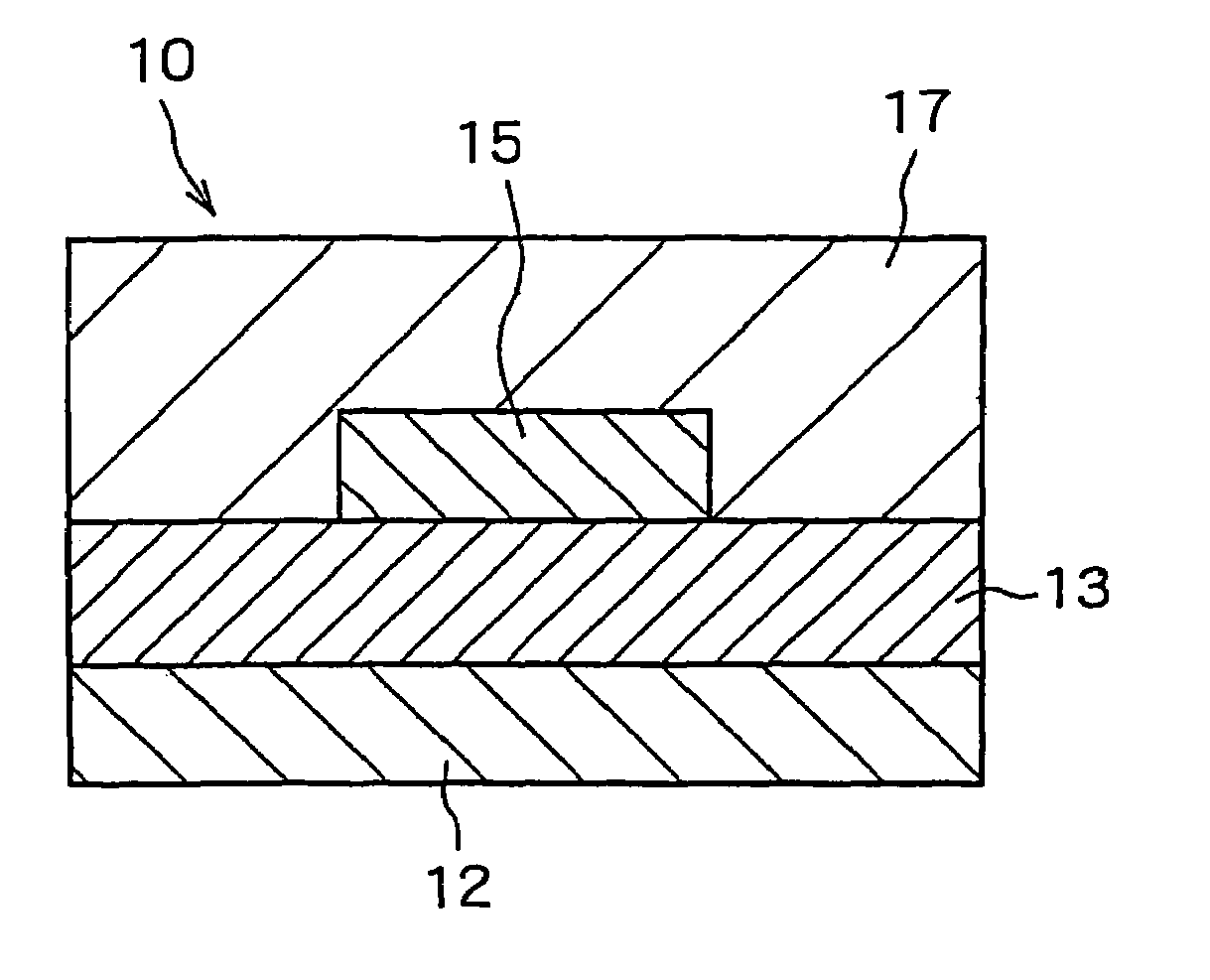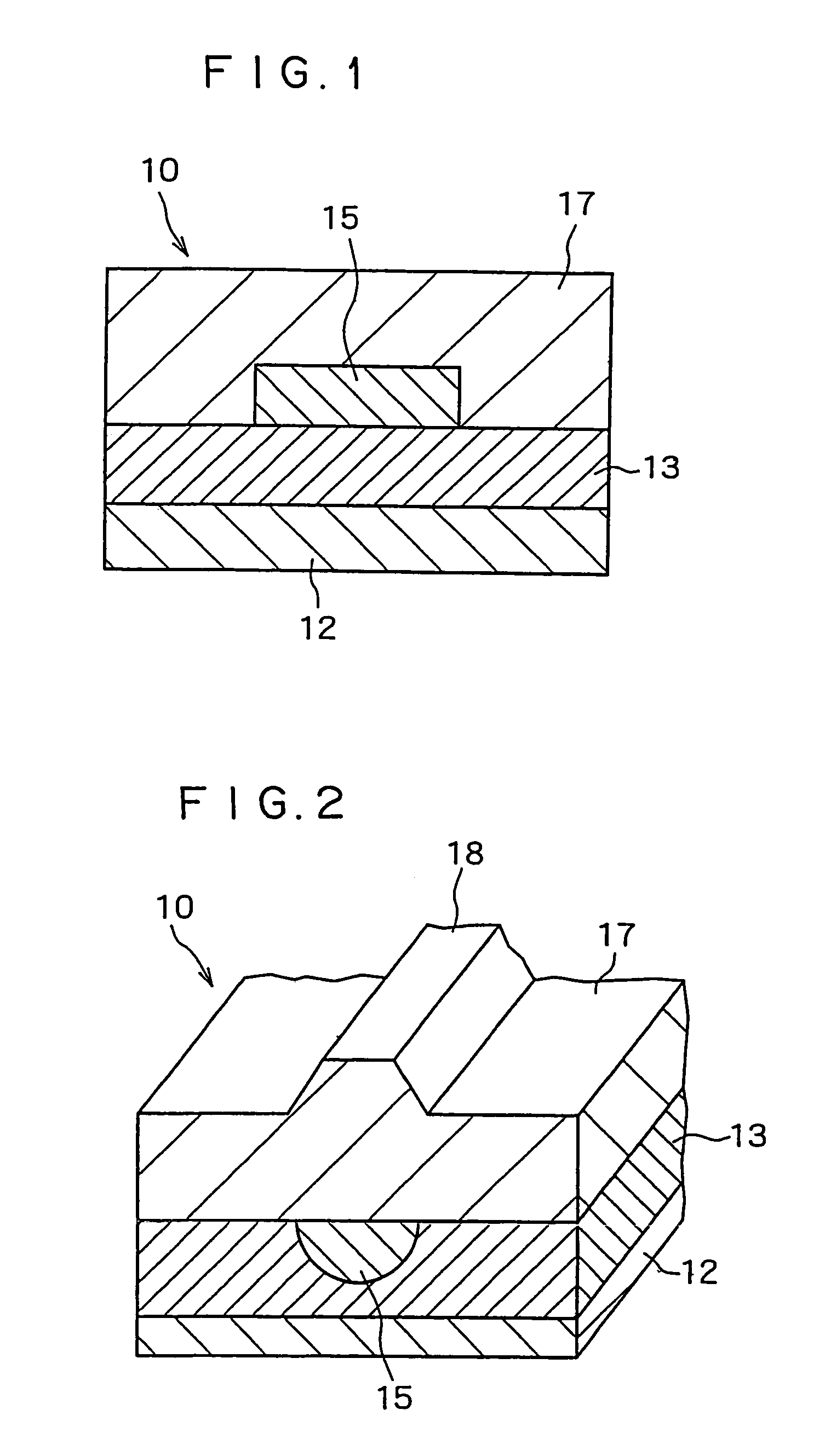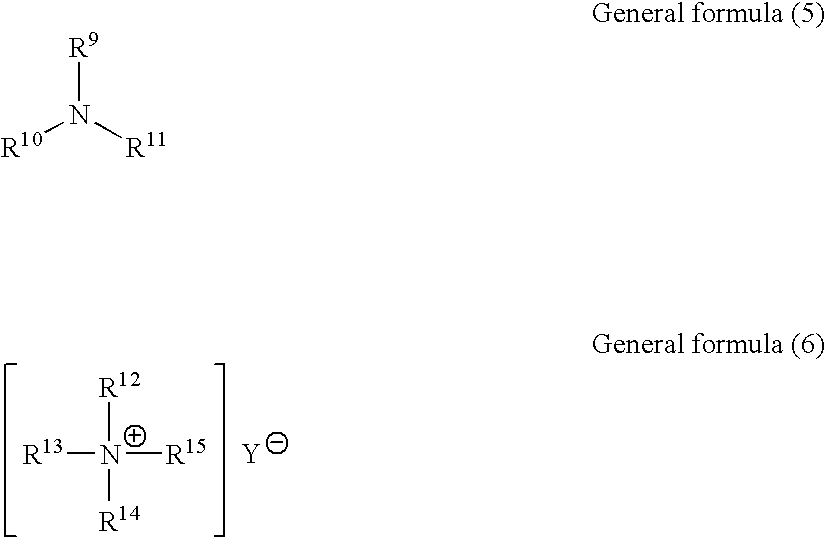Positive type radiosensitive composition and method for forming pattern
a radiosensitive composition and composition technology, applied in the direction of photosensitive materials, instruments, photomechanical equipment, etc., can solve the problem of limit the type of monomer or polymer that can be used, and achieve the effect of reducing waveguide loss and excellent resolution
- Summary
- Abstract
- Description
- Claims
- Application Information
AI Technical Summary
Benefits of technology
Problems solved by technology
Method used
Image
Examples
example 1
[0199]Composition B for optical waveguide formation was applied onto the surface of a silicon substrate using a spin coater, drying was carried out for 10 minutes at 80° C., and then heating was carried out for 1 hour at 200° C., thus forming a lower clad layer having a thickness of 10 μm. The refractive index of this lower clad layer to light of wavelength 1550 nm was 1.4628.
[0200]Next, composition A for optical waveguide formation was applied onto the lower clad layer using a spin coater, drying was carried out for 3 minutes at 80° C., and then using a photomask having an optical waveguide pattern of width of 4 to 20 μm, exposure was carried out by irradiating with ultraviolet radiation of wavelength of 365 nm and intensity of 200 mW / cm2 for 5 seconds. Next, the irradiated coating film was heated for 2 minutes at 100° C. After that, the substrate was immersed in a developing solution comprising a 1.8 wt % tetramethylammonium hydroxide (TMAH) aqueous solution, thus dissolving the e...
example 2
[0203]Composition D for optical waveguide formation was applied onto the surface of a silicon substrate using a spin coater, drying was carried out for 10 minutes at 80° C., and then heating was carried out for 1 hour at 200° C., thus forming a lower clad layer having a thickness of 10 μm. The refractive index of this lower clad layer to light of wavelength 1550 nm was 1.5236.
[0204]Next, composition C for optical waveguide formation was applied onto the lower clad layer using a spin coater, drying was carried out for 1 minute at 80° C., and then using a photomask having an optical waveguide pattern of width of 4 to 20 μm, exposure was carried out by irradiating with ultraviolet radiation of wavelength of 365 nm and intensity of 200 mW / cm2 for 5 seconds. Next, the irradiated coating film was heated for 2 minutes at 100° C. After that, the substrate was immersed in a developing solution comprising a 1.8 wt % tetramethylammonium hydroxide (TMAH) aqueous solution, thus dissolving the ex...
PUM
| Property | Measurement | Unit |
|---|---|---|
| temperature | aaaaa | aaaaa |
| temperature | aaaaa | aaaaa |
| boiling point | aaaaa | aaaaa |
Abstract
Description
Claims
Application Information
 Login to View More
Login to View More - R&D
- Intellectual Property
- Life Sciences
- Materials
- Tech Scout
- Unparalleled Data Quality
- Higher Quality Content
- 60% Fewer Hallucinations
Browse by: Latest US Patents, China's latest patents, Technical Efficacy Thesaurus, Application Domain, Technology Topic, Popular Technical Reports.
© 2025 PatSnap. All rights reserved.Legal|Privacy policy|Modern Slavery Act Transparency Statement|Sitemap|About US| Contact US: help@patsnap.com



